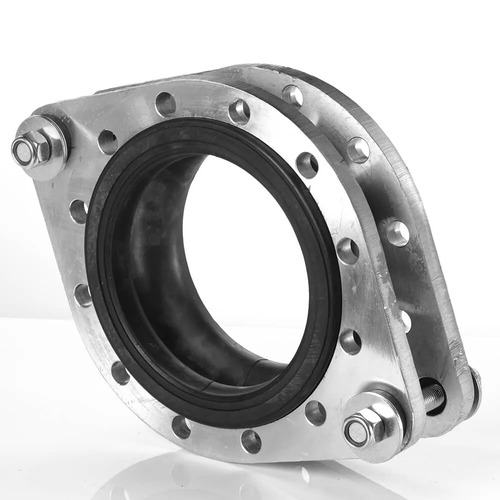
Modern plumbing and heating systems, as well as industrial processes, rely on a vast network of pipes to transport fluids. While these systems are designed for durability, they are constantly subjected to stresses that can compromise their integrity. Temperature fluctuations, pressure changes, and the inherent vibration from pumps and machinery all contribute to wear and tear. Without a proper solution to mitigate these forces, the risk of pipework damage, joint failure, and excessive noise is significant. This is where a crucial component, the rubber bellows, proves its worth.
What are Rubber Bellows?
At their core, rubber bellows are flexible connectors designed to be installed in pipework systems. Their primary function is to absorb the various movements and stresses that would otherwise be transferred to the rigid piping. The JP02 Tied Rubber Bellows, for example, are manufactured from high-quality E.P.D.M. (ethylene propylene diene monomer) rubber, a material known for its excellent resistance to heat, weathering, and ozone. This durable material is further reinforced with a synthetic fibre-reinforced body and a steel-reinforced collar, ensuring the bellows can withstand high pressures and maintain their shape over time.
The bellows are fitted with zinc-plated carbon steel swivel flanges, which are drilled to conform to BS. 4504 NP16 standards. This allows for straightforward installation into existing or new pipework systems, providing a secure and reliable connection. The ‘tied’ designation indicates the presence of tie bars, which limit the extension of the bellows, preventing them from over-stretching under pressure and ensuring they stay within their designed operating parameters.
The Problem Solvers: Key Functions and Applications
The primary reason to install flexible pipe connections is to address the specific problems caused by vibration and movement.
Vibration Damping and Noise Reduction
Pumps and other reciprocating machinery are significant sources of vibration. This vibration travels through the pipework, creating unwanted noise and placing a considerable amount of stress on the system’s components. By installing rubber bellows near the source of the vibration, a flexible break is introduced that absorbs and dissipates this energy. This not only protects the pipework from fatigue and potential failure but also dramatically reduces noise levels, creating a quieter and more comfortable environment. This function is particularly critical in applications such as L.T.H.W. (Low-Temperature Hot Water) and C.H.W. (Chilled Water) systems, where noise can be a major issue in commercial or residential buildings.
Thermal Movement Compensation
Pipework systems can expand and contract significantly as the temperature of the fluid they carry changes. Without a flexible joint, this thermal movement can cause immense stress on the pipes and their supports, leading to buckling or joint leakage. The flexible nature of rubber bellows allows them to safely absorb this movement, ensuring the system remains stable and watertight under varying temperature conditions.
Technical Specifications and Best Practices
When selecting a rubber bellows, it’s essential to consider the specific technical specifications to ensure it’s suitable for the application. The JP02 model comes in a variety of sizes, each with a specified installed length, tie bar configuration, and lateral measurement. The maximum pressure and temperature ratings are also crucial; the maximum working pressure of the bellows decreases as the operating temperature increases, a factor that must be carefully accounted for during the design and installation phase.
For chilled water (C.H.W.) systems, where heat gains and condensation can be a concern, flexible lagging jackets can be used with the bellows. These jackets help maintain system efficiency and prevent dripping. However, it’s important to note that rubber bellows used in hot water or heating applications should not be insulated, as this can trap heat and shorten the life of the rubber.
Regular inspection is another key best practice. Like any critical component in a mechanical system, rubber bellows should be part of a normal system maintenance routine to check for signs of wear or damage, ensuring their continued reliable performance. For larger pipe sizes, typically above 300mm N.B. (Nominal Bore), a heavier-duty solution like the JP04 tied rubber bellows is recommended.
In conclusion, rubber bellows are a simple yet highly effective solution for managing the dynamic stresses inherent in modern pipework systems. Their ability to absorb vibration, reduce noise, and compensate for thermal expansion makes them an indispensable component for protecting system integrity and ensuring long-term operational efficiency.